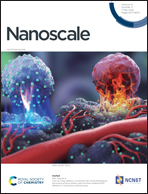Reinforced concrete inspired Si/rGO/cPAN hybrid electrode: highly improved lithium storage via Si electrode nanoarchitecture engineering†
Abstract
Electrode nanoarchitecture engineering is a transformative way to improve the structural stability and build robust transport charge pathways for high-capacity silicon in lithium ion batteries (LIBs). However, the violent expansion of silicon during the lithiation/delithiation process is the chief reason for its limited industrialization. Here, we fabricated an integrated electrode structure using polyacrylonitrile (PAN) and graphene oxide (GO) inspired by reinforced concrete. Based on low-temperature annealing, cyclized PAN was assembled on the surface of silicon nanoparticles and tightly combined with reduced graphene oxide (rGO), which could construct stable and efficient transport channels for electrons and lithium ions and address the issues of electrode structure and interface stability. The resultant Si/rGO/cPAN (RC-Si) as the LIB anode exhibits exceptional combined performances including extraordinary mechanical properties, excellent cycling stability (∼1150 mA h g−1 at 2 A g−1 over 500 cycles), superior rate capability (∼600 mA h g−1 at 12 A g−1), and high areal capacity (∼5.6 mA h cm−2 at 0.5 mA cm−2). The novel electrode design concept is promising to promote the practical application of silicon anodes and open a new avenue to develop other high-capacity anodes for high-performance batteries.



 Please wait while we load your content...
Please wait while we load your content...